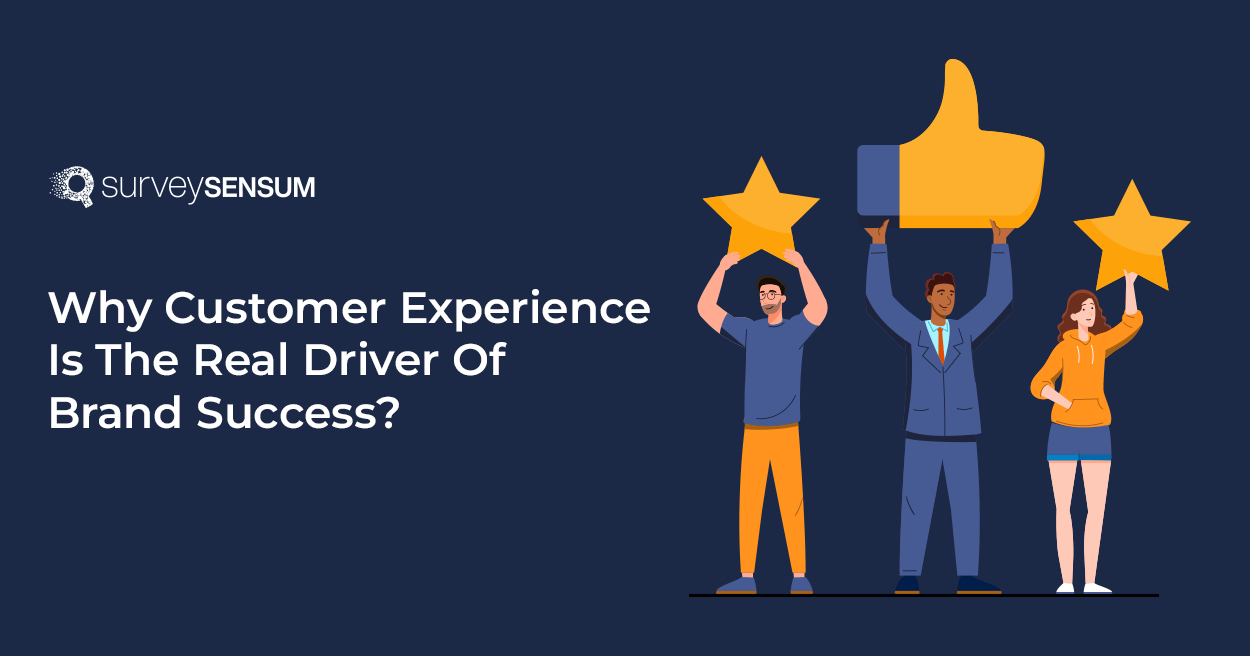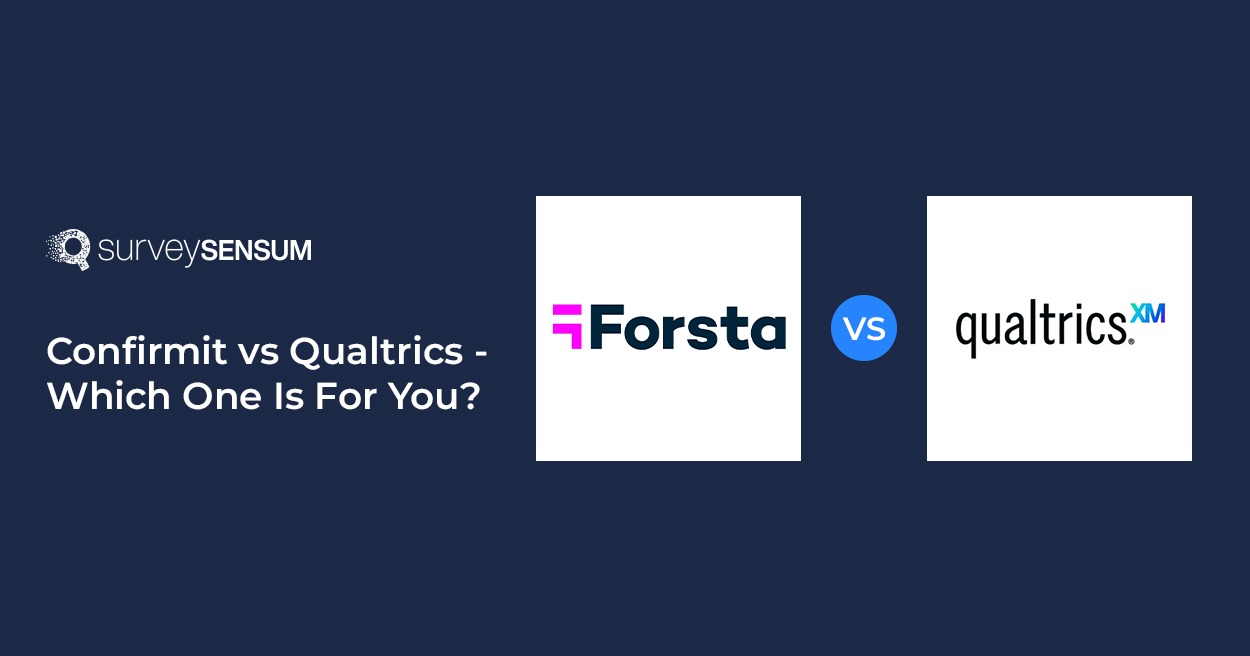

You love going to McDonald’s. Because when you go in to order, the cashier greets you with a warm smile. As you sit down, the aroma of sizzling patties fills the air, and your mouth starts watering. Finally, your burger arrives, perfectly cooked and beautifully presented. You take a bite, and it’s pure heaven — the flavors explode in your mouth, making you crave more. You leave the restaurant with a big grin on your face.
This delightful experience, my friend, is what we call Customer Experience Management (CXM).
Before we move ahead, let’s understand – What is customer experience?
Customer Experience is the overall impression a brand creates in the minds and hearts of its customers. It’s not just about the product or service; it’s about every interaction and touchpoint a customer has with a brand, facilitated through a customer feedback platform.
But why is customer experience so important?
When you have a fantastic experience, like at McDonald’s, you feel happy, satisfied, and eager to return. This makes you a loyal customer. You also can’t wait to tell your friends about it, spreading positive word-of-mouth.
This is what brands want.
They want to engage customers to feel special, create lasting memories, and build a community of happy customers.
And you know – great customer experience can make your brand successful.
Companies that succeed at customer experience increase their sales at a rate that is 4-8 percent higher than the market average. This is due to the fact that a greater experience fosters stronger loyalty, converting consumers into promoters with a lifetime value of 6 to 14 times – Bain & Company, Are you experienced?
But, how can you build and deliver great customer experiences?
Let’s talk about it here.
Building Blocks for Creating a Positive Customer Experience
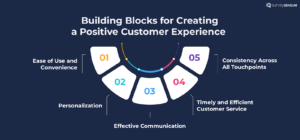
Building blocks of a positive customer experience are like the crucial ingredients that make a dish truly delicious. So, let’s take a closer look at these essential blocks to create memorable customer experiences:
1. Make Your Products & Services Easy-Peasy
How’d you feel if you use a complicated product?
Frustrating right?
Your customers feel the same!
That’s why you must create easy-to-use products and offer convenient services.
PWC’s Experience is everything: Here’s how to get it right research says, ‘43% of all consumers would pay more for greater convenience.‘
So, offer easy-to-use and convenient products and services. By doing this, you can increase customer satisfaction and overall experience. This will also strengthen your brand’s reputation, foster customer loyalty, and can build long-term business success.
2. Offer Personalization
Are you offering personalized experiences?
If not, then you must begin because it plays a crucial role in creating a positive experience.
‘80% of customers are more likely to buy from a brand that offers personalized experiences.’ – New Epsilon research
When a brand shows that it understands and cares about its customers, it forges a special connection that goes beyond a transactional relationship.
By delivering personalized experiences, you not only meet the specific desires of your customers but also foster a positive and memorable interaction. And this will help you to set your brand apart from competitors.
Here’s how you can do it –
- Collect relevant customer data to understand their preferences and needs.
- Segment your customer base based on common characteristics or behaviors.
- Use customer persona to deliver personalized recommendations and offers.
- Tailor communication and messaging based on individual customer preferences.
- Customize content on your website or app to cater to each user.
- Use automation and AI to personalize interactions.
- Leverage personalization in email marketing by addressing customers by name and suggesting relevant products.
- Give personalized customer support by anticipating needs and offering tailored solutions, as well as providing relevant business proposals.
- Leverage AI tools to revamp traditional experiences; PDF Chat tools can offer a new way to consume PDFs and improve customer interactions.
3. Must have Effective Communication!
You ordered your favorite black leather pants on Flipkart and it was supposed to be delivered today but it didn’t. So, you called customer support to enquire about it. The agent listened to your complaint actively and answered you by communicating with the delivery person about the status of your product delivery. Within minutes, the agent replied that your product will be delivered today at 4:00 P.M. Now you’d be satisfied to know the delivery status and how the customer agent handled your concern. It’s great to see how the customer agent swiftly resolved the issue, ensuring the delivery is on track for today, especially given the expectation for same-day delivery.
This is how effective communication builds trust and strong customer relationships.
When your brand communicates clearly and promptly, it shows its commitment to transparency and reliability. By providing information in a concise and easily understandable manner, customers feel informed and empowered in their interactions with the company.
Also, according to Genesys’ State of Customer Experience research, ‘7 out of 10 customers value having the same representative or agent assist them consistently.’ This continuity creates a sense of familiarity and comfort, akin to having a friendly waiter who patiently explains the menu and addresses your questions, helping you make the best choice for your lunch.
4. Deliver Timely and Efficient Customer Service
‘80% of American consumers point to speed, convenience, knowledgeable help, and friendly service as the most important elements of a positive customer experience.’ Delivering gourmet-level, gluten-free meals can drive brand success by presenting a product that is both high in quality and meets specific dietary requirements, thereby enhancing the customer experience. – PWC’s Experience is everything: Here’s how to get it right research
That’s why you must deliver great customer service.
But, how to do that?
- Use an efficient ticketing system to organize and prioritize inquiries – close the feedback loop.
- Set clear response time expectations and meet service level agreements.
- Offer self-service options for customers to find answers on their own like blogs, FAQs, video tutorials, etc.
- Streamline communication channels and integrate them effectively.
- Train and empower your support team with the right tools.
- Use automation and chatbots for quick and accurate responses.
- Monitor customer service metrics and continuously improve your service.
- Actively listen to the voice of your customers for valuable insights and improvements.
5. Consistency Across All Touchpoints
Yes, the secret sauce that ties everything together is – CONSISTENCY.
Whether your customers are interacting with you online, in-store, or over the phone, they want a consistent experience. For example, a unified digital product catalog can help ensure consistency across all channels by presenting the same information and look & feel.
A PWC retailing report found that the number of companies investing in the omnichannel customer experience has jumped from 20% to more than 80% to deliver the same customer experience at all touchpoints.
And one such company is IKEA. It ensures that their customers have a similar experience, whether they are browsing products on their website, exploring the aisles of their physical stores, or seeking assistance over the phone. By maintaining consistency, IKEA builds trust with its customers, fostering a sense of reliability and dependability.
To be consistent at all the touchpoints in the customer journey, you’ve to
- clearly articulate the desired customer experience you want to deliver,
- add CRM to streamline the process,
- train your employees to deliver the same experience at all touchpoints,
- regularly monitor customer interactions,
- collect feedback at each touchpoint,
- use gathered feedback to make iterative improvements to your customer experience.
With these building blocks, you can create a positive customer experience.
But, what impact of customer experience can have on brands’ successes?
Let’s find it out here.
Impact of Customer Experience on Brand Success
Here let’s talk about what effect can customer experience have on brand success:
1. Customer Loyalty
Why do you visit your favorite McDonald’s? Because they never disappoint you with their burgers and services, right? – That’s customer loyalty.
When you as a brand provide an exceptional customer experience, you build a strong bond with your customers, making them loyal fans. These loyal customers become your brand advocates, sharing positive word-of-mouth, choosing your brand over competitors, and supporting you through thick and thin. This results in repeat purchases, boosting your sales and customer loyalty.
The Temkin Group, ROI of Customer Experience report implies that ‘loyal customers are 5x as likely to repurchase, 5x as likely to forgive, 4x as likely to refer, and 7x as likely to try a new offering.’
One good strategy to boost customer loyalty is – the REWARDS program.
Here’s how Starbucks does it with – Starbucks Rewards.
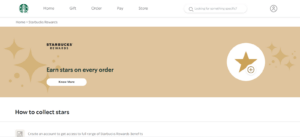
In this program, you earn points with each purchase and get motivated to return and redeem those points for free items. This is how they boost customer loyalty by creating a sense of value and incentivizing repeat visits.
2. Customer Retention
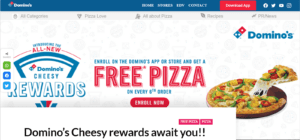
Domino’s is a great example of how customer experience can impact customer retention!
How do they do it? – With Domino’s Piece of the Pie Rewards program.
They let their customers accumulate a certain number of points to redeem their free pizza on their sixth order.
But that’s not all. They take their customer retention strategy a step further.
They offer rewards and exclusive promotions, providing ongoing value to their loyal customers. This strategy helps them keep customers coming back for more, boosting customer lifetime value.
You can leverage Dominos’ example by implementing similar strategies to retain your own customers. By designing a rewards program that aligns with your customer’s preferences and consistently providing valuable incentives, you can foster long-term relationships.
Additionally, personalization and thoughtful gestures, such as remembering important dates and offering special discounts or gifts, further enhance the customer experience and strengthen loyalty.
Remember, customer retention has proven to be highly profitable. According to Harvard Business School’s The Economics of E-Loyalty study, boosting customer retention by just 5% can increase profits ranging from 25% to 95%. So, by prioritizing customer retention and continually striving to deliver exceptional experiences, you can drive business success in the long run.
3. Positive Word-of-Mouth and Brand Reputation
Remember how you talked about that awesome McDonald’s experience with your friends?
This is the power of spreading positive word-of-mouth.
Spreading positive WoM creates a strong brand reputation and influences consumer decisions. When people hear good things about a brand, they trust it more and are likelier to choose it over competitors.
And ‘88% of customers placed the highest level of trust in word-of-mouth recommendations from people they know.’- Invesp The Importance of Word Of Mouth Marketing
4. Competitive Advantage and Differentiation
In a world full of brands, having a competitive edge and standing out is vital.
So, how can you gain a competitive edge?
By giving a – superior customer experience. It sets your brand apart from competitors and attracts customers who value that exceptional experience. It’s like having a unique ingredient (chopped peppers) in your burger that makes it taste better. This differentiation helps the brand thrive and succeed.
Deliver Exceptional Customer Experience with SurveySensum
Now you know customer experience has a profound impact on your brand’s success.
But, do you know how to improve customer experience?
Strategies for Enhancing Customer Experience
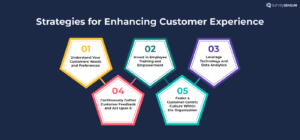
Here’re the 5 strategies that you can use to improve customer experience:
1. Understand Your Customers’ Needs and Preferences
Understanding your customers’ needs is essential for brands, much like a skilled chef who knows their customers’ favorite dishes.
But how can you achieve this?
By using various methods such as conducting online surveys, leveraging social media channels to conduct polls, and actively listening to customer feedback. Additionally, provide a regular customer service training video session to your employees to ensure that you stay on track with customer needs and demands, as well as maintain a positive brand reputation. These approaches help you gather valuable insights into what your customers truly want.

For example, Netflix analyzes viewers’ watch history and suggests personalized movie recommendations based on their preferences. Through this, they can customize their products and services to meet specific customer desires and preferences. This customer-centric approach ultimately leads to higher customer satisfaction and happiness.
By continuously staying attuned to your customers’ needs, you can build stronger relationships and foster loyalty, ensuring your brand remains relevant and successful in the long run. To do so, you need to regularly schedule social media posts as well as continuously communicate with your customers along the way.
2. Invest in Employee Training and Empowerment
Investing in training employees to understand customers and provide efficient assistance is crucial for brands, just like a skilled chef who trains their kitchen staff to cook delicious meals to deliver the best customer experience.
But do you know why is this important?
Well, when employees have a deep understanding of their customers, they can effectively address their needs and ensure a positive experience.
How can you achieve this? – By implementing comprehensive training programs that equip your employees with the necessary knowledge and skills. This includes teaching them about customer behavior, effective communication techniques, and problem-solving strategies.
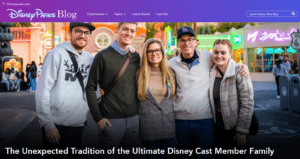
For instance, Disney is renowned for its magical customer experiences. They have an extensive employee training program known as Disney Traditions. This program immerses employees, or cast members, in the Disney philosophy, focusing on creating happiness for guests. Training covers areas such as attention to detail, storytelling, and the importance of creating magical moments for every guest.
By implementing strategy, you can enhance customer satisfaction, and foster long-term loyalty and positive brand perception. Because ultimately, it’s the employees who become brand ambassadors and play a vital role in delivering exceptional experiences to customers.
3. Leverage Technology and Data Analytics
Technology is the secret ingredient that helps brands enhance customer experience. By using technology, you can create a seamless and personalized shopping experience for your customers.

Here’s an example of Lenskart leveraging technology to create a seamless and personalized eyewear shopping experience. Their virtual try-on feature allows customers to see how different eyeglasses and sunglasses will look on their faces without physically trying them on. Also, the AI-powered recommendations, accurate eye power calculation, home eye check-up service, and omnichannel approach all contribute to delivering the best possible customer experience.
This is how they make their customer experience more convenient and tailor to individual needs with technology. Similarly, businesses in the food and beverage industry are enhancing customer satisfaction through innovations like Blade kegs, which make it easier for bars and restaurants to serve freshly tapped draft beer with consistency and efficiency.
4. Continuously Gather Customer Feedback and Act Upon It
Conducting customer feedback regularly empowers brands to ask, listen, and act. It allows you to incorporate customer feedback into your product roadmaps and close the feedback loop, resulting in responsive solutions to improve customer satisfaction.

For example, Starbucks, a famous coffee chain, has a special website called My Starbucks Idea where customers can share their suggestions and thoughts. Starbucks values this feedback and acts upon it. If customers suggest improvements or new ideas that other customers also like, Starbucks will actually make those changes.
With this, Starbucks ensures that their customers’ voices are heard and they make changes based on what they want.
5. Foster a Customer-Centric Culture Within the Organization
Fostering a customer-centric culture involves prioritizing customer needs, actively listening to feedback, empowering employees, personalizing experiences, and embracing continuous improvement. By putting customers at the forefront and understanding their preferences, you can align your strategies to deliver exceptional experiences.
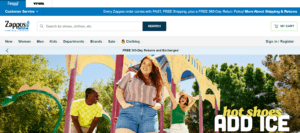
Just like how Zappos, an online shoe store, did. They prioritize their customers by creating a work environment where employees are encouraged to provide exceptional service. Even if it takes a long time, they’re willing to spend hours on the phone helping customers make the right purchase decisions.
This customer-centric culture ensures that customers feel valued and well taken care of. It’s like the entire team at Zappos is working together to make every customer’s experience special and memorable.
By consistently striving to meet customer expectations, you can create memorable experiences.
After knowing the strategies to enhance customer experience, implement it.
Deliver Exceptional Customer Experience with SurveySensum
But wait. It doesn’t end here.
Because here comes the key metrics for measuring customer experience success.
Key Metrics for Measuring Customer Experience (CX) Success
You can measure customer experience success by these 3 key metrics to see how well your brand is doing in making its customers happy:
Net Promoter Score (NPS): NPS asks a loyalty question – how likely are you to recommend a brand to your friends and colleagues? Customers answer on a scale from 0 to 10.
The higher the score, the more likely they are to recommend.
Customer Satisfaction Score (CSAT): CSAT asks a satisfaction question – how satisfied are you with a (specific) interaction? Customers usually rate their satisfaction on either a Likert scale or a 5 or 7-point scale.
If your brand has a high CSAT score, it means your customers are happy with their experience.
Customer Effort Score (CES): CES measures how easy or difficult it is for customers to purchase or get in touch with support from your brand. It asks customers to rate the effort required on a 5-point scale.
A low CES score means it was easy for customers to do what they needed, while a high score means it was a struggle.
By using these metrics, you can assess how well you meet customer expectations and identify areas for improvement. Just like a report card, these metrics help you understand how successful you’re in creating great customer experiences.
Conclusion
In conclusion, the digital landscape has transformed the way customers connect with brands, making the digital customer experience crucial for success.
As Forrester’s CX Drives Revenue Growth asserts, ‘improving CX can increase profitability at a rate of 5.1 times compared to those who do not.’ So, improve CX and customer sentiment towards your brand by focusing on creating superior Customer Experience Management (CXM) which can optimize your product or service for different customers in a digital ecosystem. Improved customer experience can help you win, serve and retain customers.
But if you want to take customer experience to the next level, consider leveraging SurveySensum. This powerful tool not only captures real-time customer feedback but also provides insightful analysis and closes the feedback loop.
With SurveySensum, you can truly understand your customers’ needs and make data-driven decisions to enhance their experience. Embracing this result-oriented and efficient approach is key to ensuring the success of your brand in the dynamic world of customer experience.






